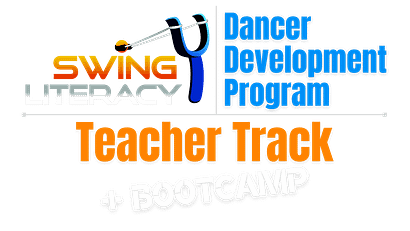
A comprehensive program to help West Coast Swing teachers worldwide teach smarter so they can help more students progress faster and have more fun.
Are you ready to rebuild your WCS community stronger?
There is a way...
...to make teaching West Coast Swing more efficient, effective, and fun...
so you can develop students' skills smarter, faster, and easier.
This universal game-changing method makes a profound difference in your WCS teaching
...regardless of your skill level
...regardless of your teaching experience
...regardless of your chosen style or philosophy.
You can transform your students' learning TODAY.
Can you relate to this?
As a teacher...
You love helping people fall in love with West Coast Swing. You're doing your best to raise competent, confident dancers. Seeing students progress is incredibly rewarding.
But you still struggle with:
And you often wonder:
You are not alone! Many teachers struggle with these same issues.
(Never fear - Swing Literacy answers all of these questions and many more!)
Still, that's not the only problem:
The students struggle...
As a teacher, you want to make it easy for your students to "get" West Coast Swing. You want them to level up as quickly as possible. But for some reason, many of your students are not improving as quickly as you’d like. They show up for classes, but they struggle to progress:
"I feel like a robot, just marching around. I want to be able to express myself more and feel like I'm really dancing."
"I wish more good dancers would invite me to dance and enjoy dancing with me."
"I really struggle with lower level dancers. I don't know how to cope so it's not as fun."
"I feel like I should be progressing faster. I've been dancing long enough, I should be in the next level by now."
"I can't seem to ever get a callback. It's really getting me down and I'm about to give up."
"I feel like I've already learned all the material from the teachers, so there's no point in continuing classes."
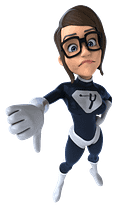
Ugh! We get it - having your students struggle to
develop their WCS is incredibly frustrating!
Learning WCS should be FUN and can be EASY!
And that is exactly why we created Swing Literacy...
We're on a mission to renovate and elevate how dancers learn West Coast Swing
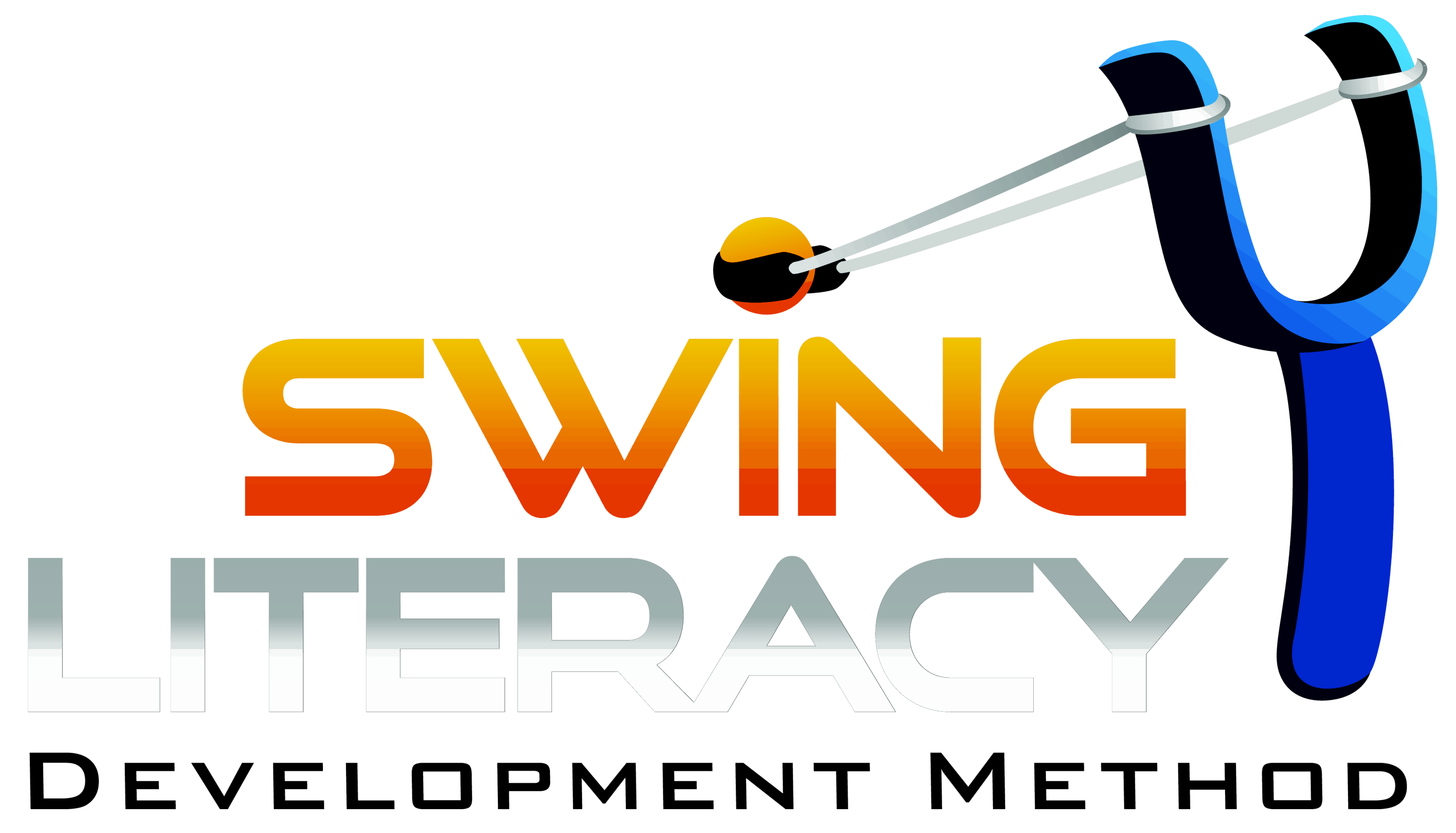
Introducing the
Swing Literacy Development Method
Way beyond a workshop...way beyond a theory...
A comprehensive suite of programs that deliver
a powerful, progressive, and most importantly, proven method to learn and teach WCS
that solves your learning frustrations and
rescues you from your struggling...
...like a Superhero!
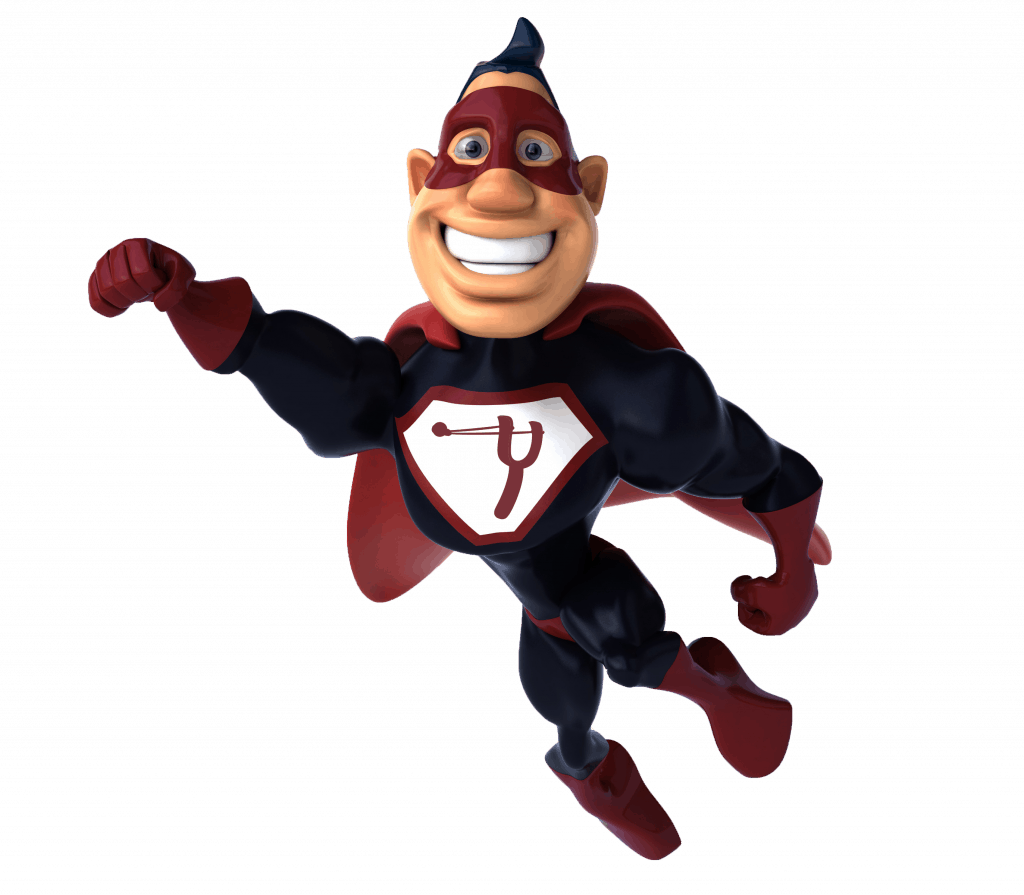
We train WCS teachers to #teachWCSsmarter
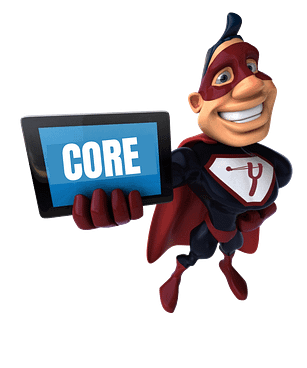
Using a two-pronged approach of online study and interactive coaching, we created a comprehensive program that trains teachers how to take their existing content and wisdom and enhance it for better results.
The Swing Literacy Bootcamp Teacher Track trains you how to...
The clear curriculum and training program you've been looking for.
Here are some of the key takeaways you’ll get from taking this course:
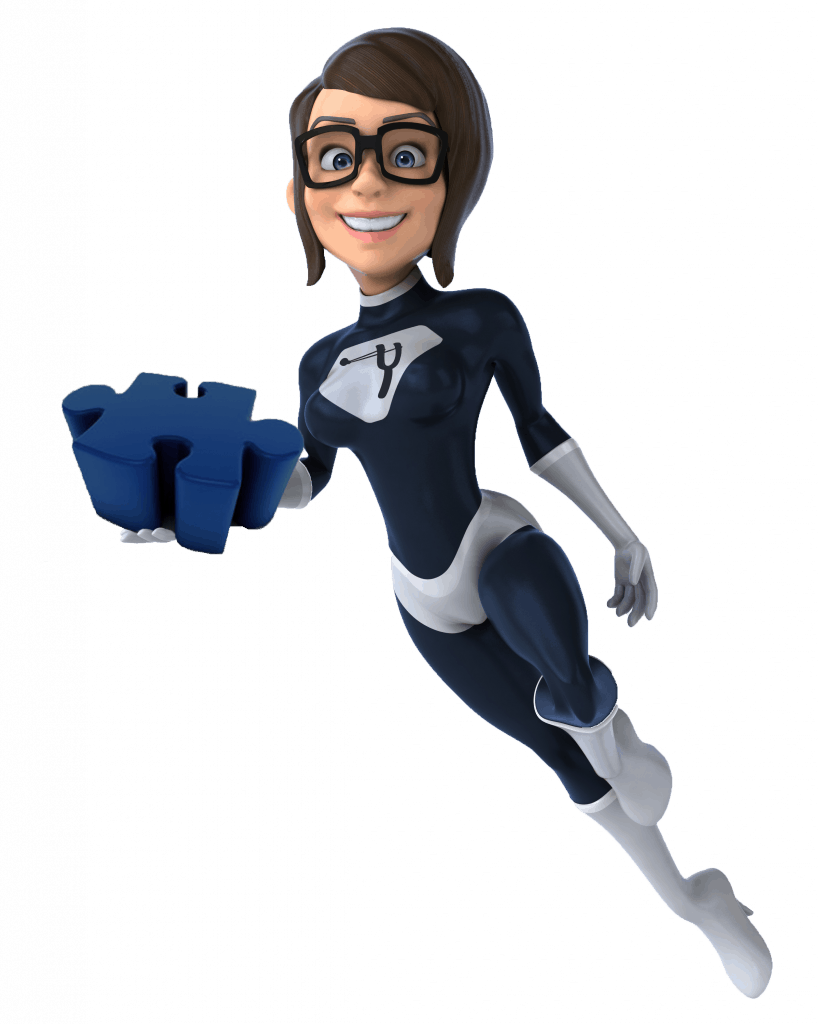

More efficient formula
Have a more efficient formula to teach Beginners (no matter which WCS style you prefer) so they learn faster than with traditional methods.

Kick-start new dancers
Be able to teach a brand-new dancer everything they need to survive their first social dance and get hooked enough to sign up for lessons – in 15 minutes! (see our proof below)

Unique skill development approach
Teach the 14 Fundamental Movement Skills in fun and engaging ways that help students build tools they can apply to their whole dance

Relief from overwhelm
Solve all your technique confusion once and for all so you can decode any instructors’ advice and leverage it to learn more advanced material.

Figure out what to prioritize
Learn what you should be spending your time and effort to work on first to make the biggest improvement impact on your dance

Learn skills faster
Improve your ability to learn faster so that you can get more value out of any workshop, video, or lesson.

Conquer "Quality of Movement"
Drastically improve your “quality of movement”, so you get more recognition from more experienced partners, peers, and judges.

Own your dance
Finally be able to “feel like you’re dancing”, comfortable, self-expressed, and musical instead of just marching through patterns.

Get more fun dances
Be able to survive and compensate for any social dance partner, (without sacrificing your own fun) and become one of the most desirable, social dance partners in your region.

Get a cohesive vocabulary
Learn how to use specific language to make learning "stickier" and technique more accessible to your students

Help students appreciate technique
Train your students to appreciate, love, and crave technique instead of whining for more patterns.

Optimize your own material
Take the teaching material you have already collected and learn to sequence it and deliver it more powerfully.
How Swing Literacy is rescuing teachers from struggling
The Problem:
When we first started teaching WCS, we followed the model of our own (awesome) teachers, and didn't question if it was the best method - it was just the method we were used to. But something never felt right. Something was missing, and we felt there must be an easier way.
The Solution:
So we started borrowing pedagogical methods from Tessa's training in teaching school and coaching sports. We didn't change the WCS content. We just changed how we taught it, the sequence, and the emphasis.
The Results:
Several years of research and testing proved that our evolving method was way more effective than the way we were taught, and way more fun for our students.
Students in group classes, workshops, and private lessons were improving faster AND having more fun learning! We even used these methods to accelerate our own progress, launching us to Champion level in both improvisation and choreography competition.
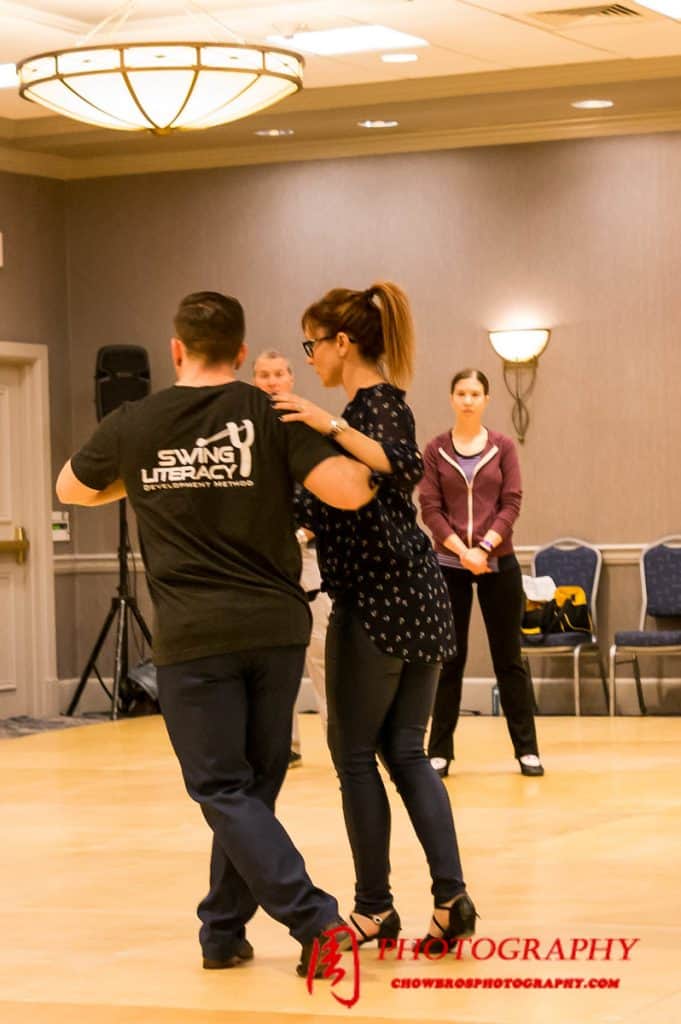
Sharing it with the world
We really wanted to share this method so everyone can enjoy the same results and help West Coast Swing grow strong and healthy around the world! So we codified the process so ANYONE can use it - no matter what level they are, no matter what style they prefer, they can keep the content of what they teach... but if they use this method to transform the way they teach it, they can rescue their students from unnecessary struggle!
After 10 years of training teachers in workshops worldwide, in 2014 we created an online training program to make this method accessible to all teachers, with or without access to us.
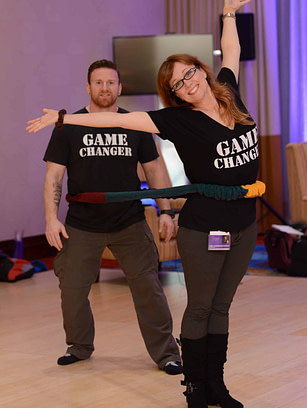
Not just another "style"
The Swing Literacy method is style-agnostic: It is the physical pedagogy that provides the underpinning for all styles. After training you how to think with a skill development approach, we coach you to design or upgrade your own program in your own style.
Way more than a workshop
The Teacher Development Program is not a simple intensive or video series. This is a comprehensive program of study that consists of online multimedia coursework, assignments, projects, feedback, coaching, and certification that you can complete at your own pace
All online: no "live" requirement
What used to be only a 10-hour intensive is now upgraded, expanded, and 100% online. No need to wait to see us in person. You can start now and see results this week! There are live projects and workshops that are optional in the Practicum.
Unleash your dancing superpowers
We’ve consolidated and refined our 40+ years of experience and many thousands of dollars in teacher trainings and tailored it to West Coast Swing to create a concentrated, powerful learning resource that will permanently upgrade your dancing within days.
Right from the first module, you’ll feel a paradigm shift in your thinking about learning to dance. After just a handful of hours, you’ll have a much deeper understanding of the dance, and a powerful set of tools you can put to use immediately.

Jessica Wrape
When I started the Swing Literacy program, literally within the first week my students noticed a dramatic change in my teaching methods. Since finishing and implementing the SLDM, we are able to retain many more people and grow the dancers we already have. Our community probably doubled during the first few months of using the new program!

Monika Holub
After giving my students some of the core Swing Literacy skills, I noticed a dramatic difference in their quality of movement right away; and so did they! Their eyes were wide, and those 'aha moment' smiles ... The students were blown away by how differently the dance felt to them. I'm still getting messages this morning ..lol. Talk about positive reinforcement as a teacher!
And that’s only the beginning…
While it will clearly improve your students, it will also improve your own dancing!

Sam Jackson
I immediately saw results after taking the SLDM. For the first time in my (substantial) dance experience, I had a coherent and structured approach to learning dance. I had gained knowledge and skills that I feel would have taken many years to develop by any other method. Each new topic in the SLDM felt like a revelation, impacting my classes, as well as my own dancing, significantly.

Jen Malcolm
Life before Swing Literacy was frustrating!!! I was doing poorly in competition and was not exactly the most popular dancer on the social floor. After 2-years of rarely making finals in Novice, I started working with Myles & Tessa. I jumped from Novice to Advanced in just 1 year (6 events)!!
M&T's Swing Literacy system is brilliant. I can see many more “Tessons” and “Mylestones” in my future."
What is the Swing Literacy effect?
Take a breath and just imagine...
Even superheroes need coaches
Here are yours:
Myles Munroe
Myles brings a lifetime of dance background, including classical solo dance training, Ballroom, Salsa, Theatre Arts, and 6 UCWDC World Championship titles, He also brings Karate, Wing Chun Kung Fu, Jiu-Jitsu, golf and motorcycle racing to the table, and considers himself an eternal student of manipulating kinetics for sport and art.
Myles is so passionate about improving his craft, he literally has a tattoo that reads, “Technique prevents the body from limiting the soul’s expression”. His studies in all of these non-dance fields, along with being classically trained and studying the inner workings of over 60 different dances, is a huge part of what made it possible for him and Tessa to create Swing Literacy.
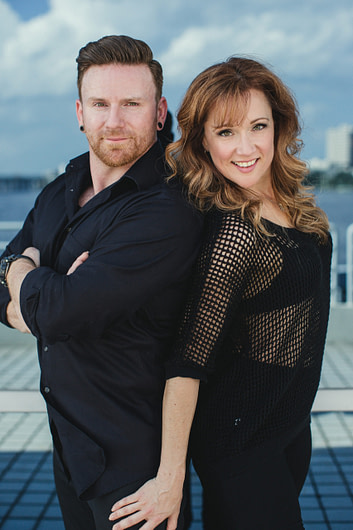
Tessa Cunningham Munroe
Tessa’s academic background started with competitive swimming, where she where she received National Coaching Certification, created a Coach Training Program, graduated from UBC with a Bachelor of Kinesiology, and started an Olympic-track coaching career, all before returning to school to complete her Bachelor of Education.
Tessa has been professionally practicing physical education, movement analysis, and pedagogy for the past 30 years, and this constant training in “how to teach” was the other huge factor that allowed Myles and Tessa to create such a powerful and effective program (Swing Literacy).
As currently active, highly decorated WCS Champions and master teacher trainers, Myles and Tessa have traveled the world accumulating, studying, and analyzing a variety of teaching resources in order to narrow down the elements the most successful ones all have in common.
Myles and Tessa hunt for the best and worst methods available, analyze why they work (or don't), and diligently research and test any new methods against physical education best practices, to produce a current, curated, comprehensive collection. Through teaching thousands of group classes and private lessons, and a variety of workshops and intensives, they have already tested their methods on real students many thousands of times.
Swing Literacy is the product of all of this research and development.
“We are in the business of R&D for teaching West Coast Swing, and making Swing Literacy the gold standard for West Coast Swing teaching.” - Myles and Tessa
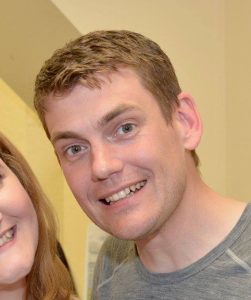
Ian Manson
The Swing Literacy program for me was like a eureka moment, finally understanding what I had been missing. Having a path connecting the common ideas together, often in logical, causal ways, creating real understanding, gives a real level of confidence to build my dance on. I couldn’t recommend this course more highly, to both existing teachers and students alike. The ideas and concepts in the material are so effective and make so much sense, one might wonder why this isn’t the standard for all.
Swing Literacy in action

Do you think it's possible (in 15 minutes) to teach a brand-new beginner to:
We do.
Here's proof.
(And we will teach you how to do it too.)
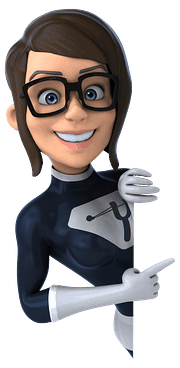
If you aren't able or prefer not to watch the video, here's a brief synopsis:
This is one example of our famous “15-minute crash course”, which we have demonstrated live at several events in front of Swing Literacy trainees and alumni. We take a brand-new dancer and ask them to help with an experiment. We tell them nothing in advance, except that no one is judging their dancing, the observers are just observing us and the effect our instructions have.
- Myles starts timing.
- We run our volunteer through the recommended progression of questions and exercises that is prescribed in this course.
- Myles checks his watch around the 15 minute mark.
By the time the experiment is over, our volunteers are able to start on a downbeat, stay on time, stretch and compress properly, steer the follower’s frame properly, and continuously do Left Side Pass, Under Arm Turn, Sugar Push, Sugar Tuck, Left Side Tuck, and sometimes a rough version of a Whip.
Their connection and elasticity consistently feels surprisingly good, and they are able to stay on time and not get distracted by their partner's footwork. We invite one of the observers to come up and test them out, and after dancing with them, they agree they feel better than most people who have been dancing for 6 months to a year.
Afterward, each volunteer was able to successfully survive social dancing on their own, leaving their partners impressed. Because they experienced immediate success, the dance seemed accessible and fun, which motivated each volunteer to follow up with either private lessons, workshops, or group classes immediately after their 15-min crash course.
When you take this course, you will learn this proven method so you too will be able to hook and book students with a simple 15 minute lesson
I never doubted Tessa and Myles, but it was very useful to see the Swing Literacy method in practice. I had an opportunity to dance with one volunteer during a dance party and the connection felt great, he was able to stay on time, and he was starting to experiment with turning. This approach to teaching WCS really inspires the student to want to learn more. Thank you for making learning and teaching WCS more accessible!

Andree Mullings
Pretty accurate description of the demo at Swingtzerland! I've danced with Luke in the party, pretty impressive, and most importantly he was truly enjoying the dance, smiling all the time! The 15 minute demo was pretty impressive, going with a pretty fast pace but it was not rushed at all.

Gyuri Dorko
But this is just a sample of what's possible.
We want to help you develop dancers smarter in ANYTHING you teach -
from private lessons to group classes to workshops.
What's Inside:
Inside the
Dancer Development Program
Teacher Track
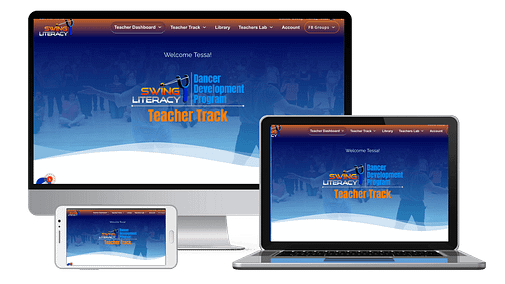
Starts with the 6 Core Modules inside the DDP
The DDP is an online multi-media digital course you can start anytime and
complete at your own pace (~40 hours), or you can do it in a group format Bootcamp.
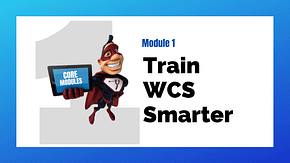
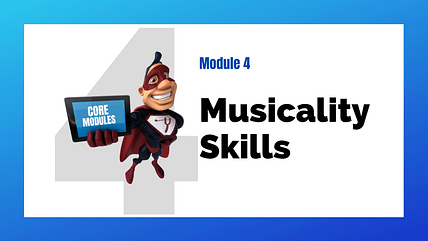
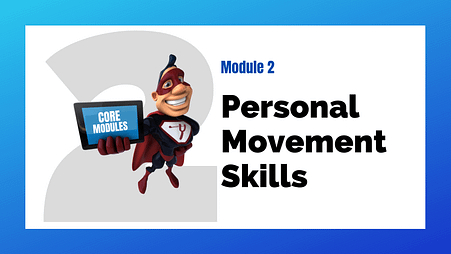
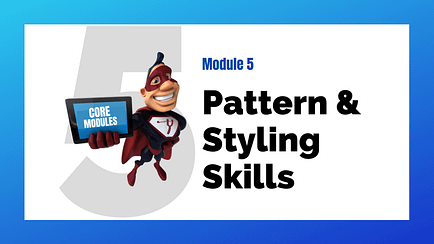
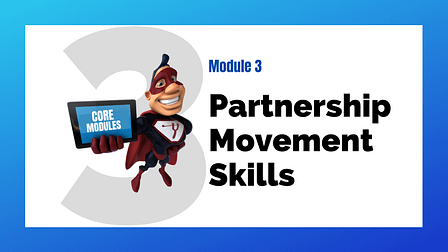
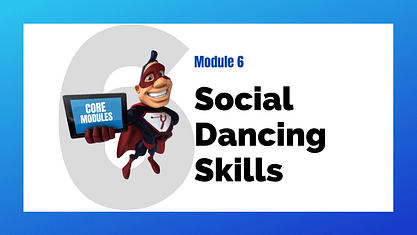
PLUS, a dedicated parallel course for teachers:

Teach students how to learn:
- Don't just learn more about how to dance - use science to learn more efficiently by learning how to learn, and transfer these skills to your students
- Learn a way to build skills progressively to develop your students' movement fluency, which is the quality-of-movement they've been craving
improve students' solo skills:
- Discover the foundational physical skills that students might be missing that is holding them back in your development at any level
- Get detailed explanations of how to develop each skill, and the recommended sequence for each


help students access connection:
- Discover and practice the surprisingly under-taught partnership skills that every West Coast Swing dancer needs to learn to have amazing dance conversations at any level
- Get detailed explanations of how to develop these skills, in a strategic sequence
build musicality:
- Get the fundamental Music theory all WCS dancers need to know, sequenced in a way that makes it easier to learn
- Learn how to effectively help your students practice and play with musical movement, both solo and with a partner, at any level


TEACH patterns & styling smarter:
- Dissect how patterns are constructed, so you can efficiently break down and teach any pattern
- Organize the patterns and styling you already know to use them more efficiently in your dancing and lesson planning
- How to teach your students a healthy perspective on patterns as part of a balanced partner conversation
raise better community members:
- Learn the real history of our dance and essential cultural skills all West Coast Swing dancers should know so you can help students feel more connected to West Coast Swing
- Teach your students how to adapt, survive, and compensate for any social dance partner without sacrificing their own dance
- Find out how you can be a positive influence on your community and start a growth spiral

Make it official
The Bootcamp provides the practical component required to complete your Swing Literacy Dancer Certification you can add to your resume and upgrade in the future.
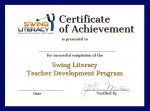
PLUS, be included in the next:

The Bootcamp includes:

Prior to discovering Swing Literacy, we always wanted something more and knew that we lost people after their beginner series. Since finishing and implementing the Teacher Development Program, we are able to retain many more people and grow the dancers we already have. Our community probably doubled during the first few months of using the new method!
- Jessica Wrape

This teacher training is right for you if:
- You're wanting to get more students in your classes and build your scene
- You're looking for some kind of effective structure that you and your fellow teachers can follow together
- You want to help students progress faster and engage more
- You're an experienced teacher wanting to take this opportunity to update your systems while things are still quiet
- You're just starting with teaching and you feel an obligation to your students to get proper training
If you are a teacher or thinking about teaching, this is the perfect training to take advantage of right now.
How much is a permanent upgrade in your teaching worth to you?
How much is it worth to make sure your students are no longer struggling to improve but instead are thriving and loving their lessons?
How much did you spend on your own personal dancing at the last event?
What would it be worth if just 1 more student was coming to all your lessons and raving about you to all the other dancers in your scene?
What about 5 more students? or 10?

I think the program is comparable to a university level course. I feel like I got a similar value from it as I did from the courses that I took during my Bachelor of Education program at university.
- Shannon Black
2 months from now, if your students look the same, how would you feel?
Now is the perfect time to upgrade your skills and systems.
The earlier you start, the better!

What teacher graduates have to say
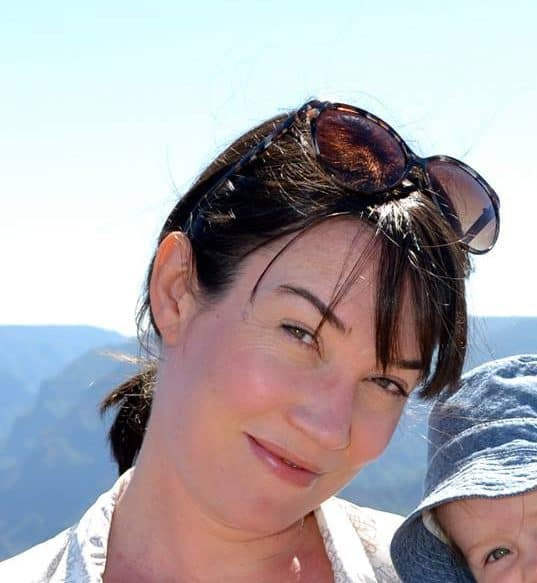
Gave my instincts a logical structure
Up until this course, I had a mish-mash of information and concepts drawn from various teachers and from my own experience, but I didn't have a logical, consistent structure to provide a framework for it all. This is absolutely going to me give me more confidence (much needed), as now I feel like I know what I'm talking about.

Delivering missing critical skills
I feel as though in other intensives, instructors will demonstrate patterns and strategies, but will not connect these to the basic skills that are required to perform these patterns/strategies. Myles and Tessa do a fantastic job explaining what prerequisite skills are required to compete the task at hand, and that helps people catch onto the material SO MUCH quicker.
We have a huge class of dancers (especially leaders) who are missing critical skills in their dance, trying to perform patterns and strategies in which they don't have the underlying/supporting skills for. Swing Literacy focuses specifically on filling those gaps in dancers' skill base. I definitely attribute MUCH of my success to your teaching style of skills before patterns.
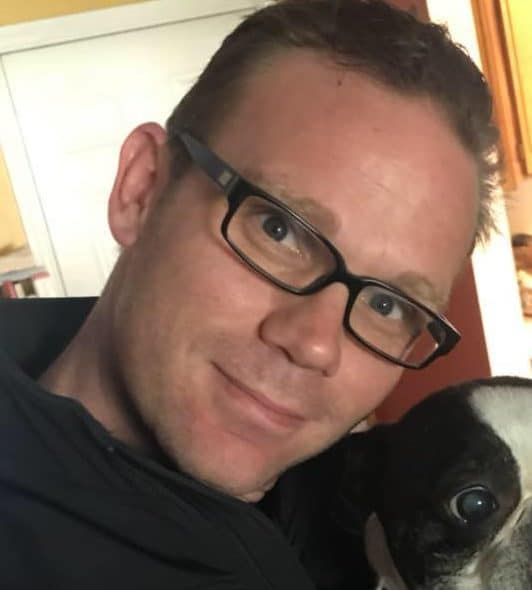
Courage to step out of the box
I had a gut feeling that things should be taught a different way - Swing Literacy gave me the courage to step out of the box of the old school teaching methodology. It gave me affirmation, guidance, courage, valildation. It reinforced my dedication to the concept of drills & skills over patterns & footwork, and I realized what was critical both to focus on and to avoid focusing on.

I’ve had plenty of diagnoses but have never been told how to make the corrections. I always felt confused by classes and workshops that alluded to some techniques, but never really went into detail about them. It made such a difference to have M&T give us a succinct language to communicate skills and techniques. Not only did they give me the coaching I need to understand how to make those corrections, but the clarity and consistency of their method gave me the structure I needed to reinforce concepts and build new habits.

Changed my approach
This course helped me to discover missing elements as both a student and as an instructor. We have all wondered why some things are more difficult to learn. The Swing Literacy program changes the way you extrapolate and helps you plan your next steps in a much more "engineering viewpoint."
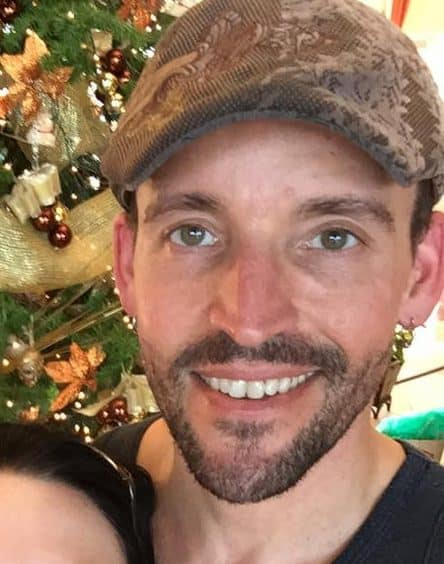
I owe it to my students
Learning how best to convey these concepts to students was golden. The assignments were very demanding as you actually have to apply what you learned instead of simply regurgitate it. I’d recommend this to anyone wanting to teach WCS and give your students the best possible chance of coming out of the series with solid fundamentals that make sense no matter what direction WCS takes down the road. If I only had access to these concepts back when first I started I wouldn’t be in the position of having to retrain my body to unlearn years of reinforced bad habits. I feel I owe it to my students to give them the best available information and convey it in the most understandable way I can. I strongly recommend this course.
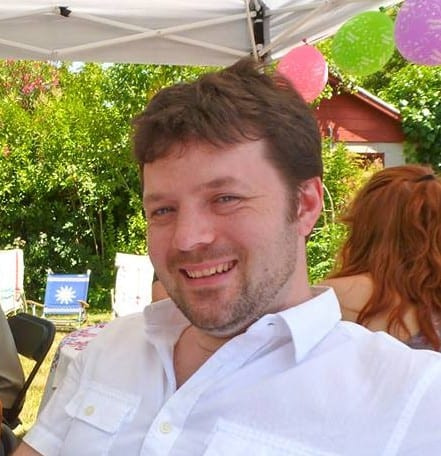
Mind blown
“I absolutely love Myles and Tessa’s approach to teaching. In just the first hour I spent with them, so many light bulbs were set off that I had to stop so I could start trying to keep track. They have a sincerity about them that I really appreciate. They’re really intent on helping me not just become a better dancer, but to understand what makes me a better dancer. It’s some of the best stuff you could hope to get from a teacher.”
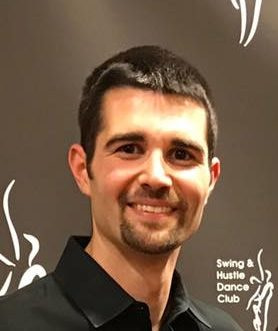
Making complex ideas simple
Rather than telling our students exactly where their feet need to be, we are providing them with the fundamental principles of the dance. This is helping my students achieve a pure lead-follow dance rather than choreographed footwork and patterns.
I have tried this in many of my group classes thus far, and it has been very well received! Many students have approached me and told me that they love how I am teaching complex ideas, but at the same time making them simple to understand.

The gold standard of WCS teaching
Myles & Tessa’s Swing Literacy Program is the gold standard of teaching to me. It’s so much more than a workshop - it’s a complete package that I can’t imagine teachers teaching without. They don’t teach you “their style”, or any style for that matter: they train you in actual pedagogy and how to build a solid foundation of physical skills (not just patterns) that gives students the best possible shot at “getting it” quicker and getting addicted. It helped me get over my imposter syndrome - I feel more confident in my teaching and I see massive improvement in the dancers in our community.

Immediate results
I had a wonderful teaching experience last night with a group of dancers I only get to teach a few times per year. After giving them some of the core Swing Literacy skills, I noticed a dramatic difference in their quality of movement right away; and so did they! Their eyes were wide, and those 'aha moment' smiles ... The students were blown away by how differently the dance felt to them. I'm still getting messages this morning ..lol. Talk about positive reinforcement as a teacher ![]() ❤
❤
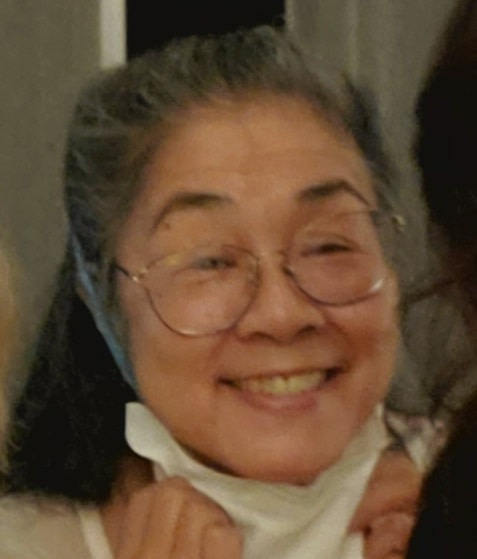
Connects all the loose ends from multiple teachers
This is different from any other learning format, and is an opportunity to be exposed to a new way of learning WCS. It is strategic and very well communicated. It keeps you motivated and accountable. It also provides you a sense of Community with others that are like minded. SL is different in that it starts with the foundation and builds from there, as opposed to my past experience, where a multitude of teachers and lessons were constructing a dancer with spackle. Takes all the loose ends from multiple teachers and weaves them into a comprehensive approach that supports the learning process.

Invaluable Investment!
I am so thankful I invested in the Swing Literacy Development Method. Myles and Tessa have put together a wealth of teaching resources and strategies for learning the fundamental movement skills of west coast swing. The course material, assignments, video clips, and practicum component were as developed and in-depth as college courses I have taken online.
I was especially impressed by and grateful for the detailed, personalized feedback I received. Tessa read through each and every assignment and included multiple comments and suggestions throughout, as well as answered any questions I had. This course has given me the confidence to know that I am presenting my students with all the tools they need to dance west coast swing authentically.
I have already had great feedback from students telling me that they are finally learning connection, elasticity, and other vital techniques that often get skipped in other classes. Everyone should be looking to improve how they teach WCS, and this comprehensive program is the way to go!

10x your learning
"Working with Myles and Tessa has changed my entire perspective on how I look at not just West Coast Swing but all Dancing in general. As someone who has spent years practicing and thousands on lessons I can honestly say that working with M&T is one of the easiest and most efficient ways to learn how to dance. What I would spend 10 privates on with another instructor they can not only teach in a single lesson, but get to me a point where I am far more confident in my understanding of the subject. They have taught me to look into the how and why a dance works and allowed me to not only fix my own bad habits in WCS but also in my Ballroom as well. Thank you so much M&T for all of your dedication to not just dance but to the art of teaching it as well."
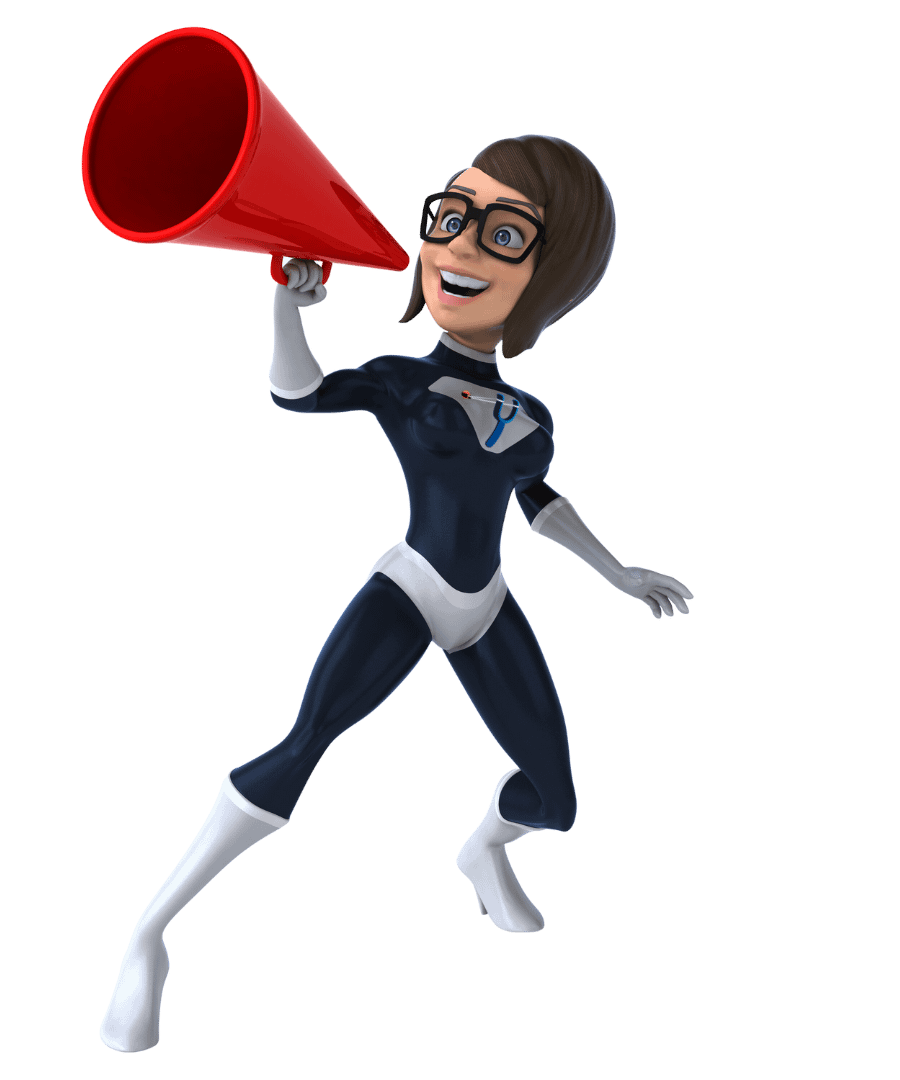
Uniquely creating an environment where people connect
Over the years, one thing has consistently stood out to me: their workshops are far more than just dance lessons. Myles and Tessa bring an unmistakable energy and a deep passion for the dance that transcends technical skills.
When they step onto the dance floor, the world seems to pause for a moment. They create an environment where people connect, not only with each other but also with themselves. This is especially remarkable in a time when we all rush through life, with little time for relaxation. But with Myles and Tessa, there is space—space to learn, grow, and enjoy together.
What sets them apart from other instructors is their approach. While many dance teachers focus on teaching impressive moves or refining styling and technique, Myles and Tessa take a different path. They emphasize the connection between the dancers, regardless of their different backgrounds and personalities. Whether you're a beginner or advanced, everyone comes with the same goal: to become a better dancer and have a great time on the floor.
In their workshops, they highlight the essence of dancing together: you’re not just dancing for yourself, but also for your partner. Their method makes you aware of how you can adjust to each other, so both of you can enjoy the moment. This creates a deeper connection and fosters joint development, both as individuals and as dancers. It’s not just about the steps; it’s about finding harmony in movement and experience.
The beauty of their approach is that they bring dance back to its roots: a way to connect with others and with yourself. They remind us that dance is a social, physical, and emotional journey. You move, you connect, and you grow on multiple levels. West Coast Swing, in particular, is a special dance form because it also evolves, partly thanks to the ever-changing music.
For anyone looking to learn West Coast Swing on a deep fundamental level, their Swing Literacy Development Program provides the most complete and perfect source. Whether you're aiming for social dancing, competitions, or simply personal growth in your dance, their method offers a solid base to grow with.

Observing a Swing Literacy newcomers workshop
"I recently had the privilege to assist in large back-to-back newcomer (brand new to WCS) workshops. The first workshop employed the Swing Literacy teaching method, and the next workshop used the more traditional method. Having studied both methods, I expected the Swing Literacy method to work better, but I was not prepared for just how effective it was and how quickly it worked.
During the Swing Literacy segment of the newcomers’ workshop, I noticed the students were able to perform many of the skills to a level I would typically expect from more experienced dancers. Dancing with newcomers and being able to feel their elasticity and having them connect to me like an intermediate dancer was definitely a surprising experience: t was easy and enjoyable - it wasn't a chore or struggle to dance with them. I observed them smiling, laughing, keeping their eyes up, and focusing on their partners. After the workshop was over, I was impressed that they were able to sustain these skills as they practiced on their own.
The traditional-method workshop was taught by very experienced and lovable teachers, but about 10 minutes in, the atmosphere in the room changed. I noticed that the students started struggling: the usual frustrations that go along with learning dance for the first time were back. I had one couple ask me for help with the patterns that were being taught, and the leader refused to dance until he could figure out his own steps. At this point he was so frustrated that no matter what I did, whether breaking down the pattern or asking him to ignore the pattern and just dance had no effect. He was already too stressed out to dance or learn at this point: a common problem that I have seen in many classes.
When I danced with the Newcomers in the traditional workshop, many of their skills that made our dances enjoyable for me during the Swing Literacy workshop had disappeared: they stopped their momentum, they stopped using elasticity, their heads were down, looking at their own feet, and they were all focused on trying to do the patterns instead of leading or following.
As someone who has both danced and taught WCS for years I found myself a little confused during the traditional method workshop - I can only wonder how much the Newcomers must have been struggling at that point. From my personal experience during these workshops I would definitely say that the Swing Literacy method taught WCS in a way that newcomers could easily understand and allowed them to not only progress faster but also to enjoy their experience far more than the traditional method of teaching." -Glenn Clark
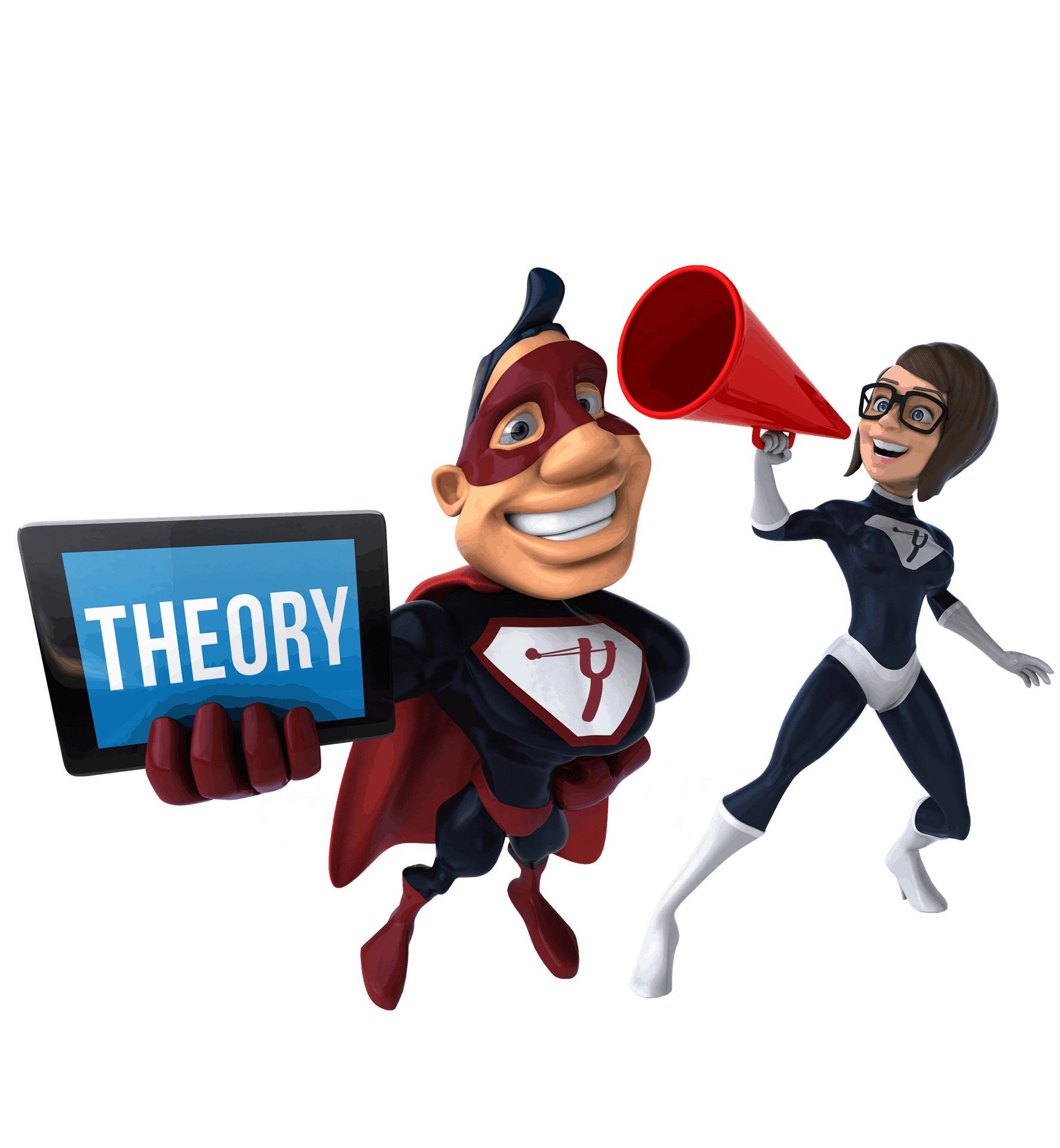
Before the retreat, I was really frustrated - I didn’t know what or how to practice. But thanks to the systematic and cooperative coaching from M&T, I could feel improvement after my first hour on the first day. Instead of guessing what they think I am asking about, M&T are patient in trying to figure out what I’m confused about, and accommodating for my learning style and level of understanding. I now feel clarity and confidence in knowing what’s possible: what I can do and where I can go.
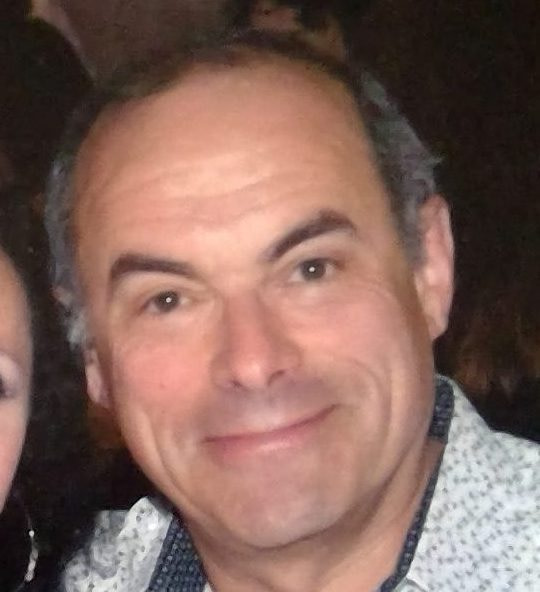
"I am a firm believer that you can not learn a dance without a consistent, progressive curriculum, that having classes at random, from different instructors and on different levels is disorienting, like picking crumbs from a table. You guys are brilliant, this is exactly what I needed and was waiting for. And, all your efforts to constantly add-on, adjust, upgrade are so much appreciated! Thank you!"

Novice to Advanced in 6 events
"Life before Myles and Tessa was frustrating!!! I loved going to dance events, however I was doing poorly in competition, and was not exactly the most popular dancer on the social floor. After a 2-year streak of rarely making finals in novice, I started taking regular private lessons with Myles & Tessa. I jumped from Novice to Advanced in just 1 year (6 events)!!
M&T have taken years to analyze this dance and have figured out how to simplify some very complex ideas. Their Swing Literacy system is brilliant. I can see many more “Tessons” and “Mylestones” in my future."

Guided Independence
“What I love about lessons with Tessa is her really interesting way of teaching. She never says : “Stop thinking, just do this shape like that because I told you to”. Instead, she takes the time to ask you the right questions to guide you to think for YOURSELF about your dance. This self-analysis makes me understand my own body mechanics, and learn even faster! Now every time I leave the ballroom, it’s always with a big smile because I had a lot of fun and also because I discovered something new about my way of dancing. It’s always like a revelation.”

The science behind teaching dance
It's like having a world class teacher - who happens to be a dancer - give you the secrets you need to know to be an effective, creative, inspirational, and inspiring teacher. It isn't just about dance... its the science behind teaching others.
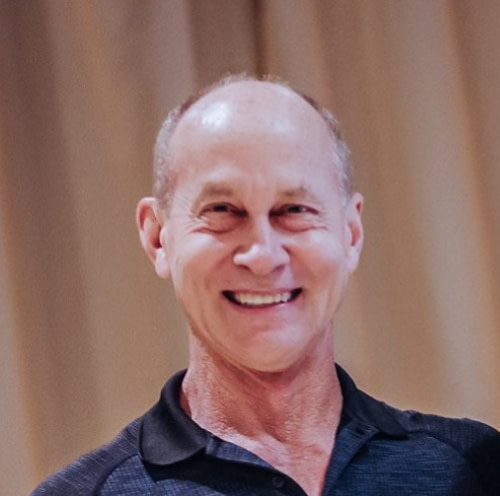
Helped me to fill in gaps and resolve conflicting advice
I often feel like other teachers can’t answer all my questions, but with M&T, I am never afraid they won’t be able to answer my questions. I feel safe asking about a conflict in my knowledge and trust that they will straighten me out and never leave me with any lingering confusion or cognitive dissonance. Before working with M&T, I knew I had lots of gaps in my foundation. I feel like M&T poured the water in that filled all the gaps. Their method allowed us to integrate the old info with the new info - I finally got all my random dots of knowledge connected. M&T have developed an awesome system to be able to assess wherever I’m at, and meet me there to build a plan designed for me.

Way beyond initiation training
I really enjoyed the Swing Literacy Teacher Development Program and strongly recommend to anybody who wants to get even more professional as a professional teacher - and even as just a dancer - the lessons helped a lot to gain a deeper understanding of how to approach a West Coast Swing Dance class - thanks to Myles and Tessa for their efforts, especially the almost instant feedback to questions and assignment gradings.
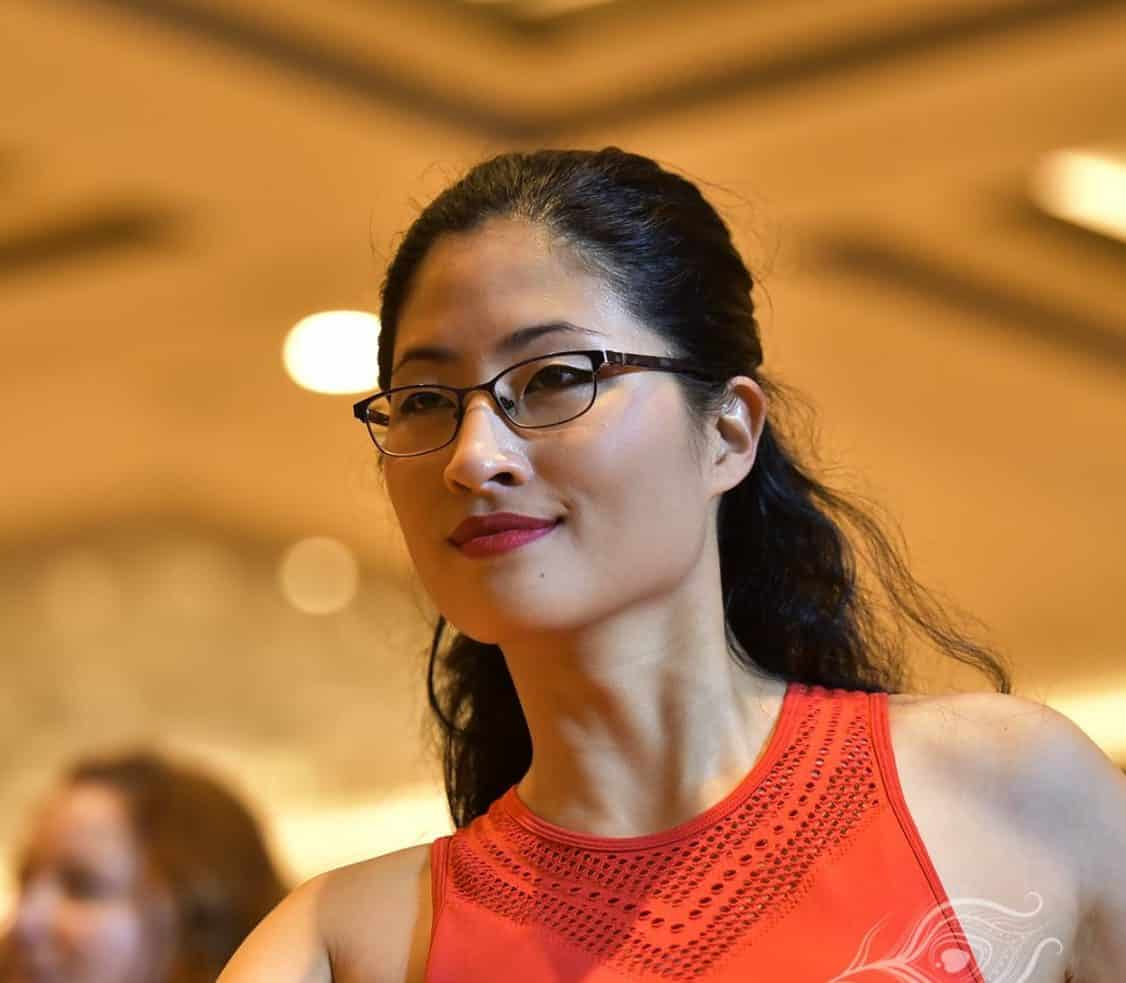
Peerless Diagnostician
The Fast Track Coaching program the best thing I’ve ever done for my dance. Tessa is a peerless diagnostician. I swear it’s like her eyes see dance in slow-mo X-ray. She once told me to stop curling my toes while dancing… when I was wearing boots at the time!! Her teaching methodology is absolutely impeccable. She doesn’t just list concepts; she teaches you how to practice and learn dance so that you can retain the information. Most of my biggest breakthroughs in dance are thanks to Tessa and the more I learn about this dance the more I realize how right she is about basically everything. She got me out of Novice and now she’s gotten me out of Intermediate. The plateaus in my dance not-so-oddly coincide with the periods of time when I was working with her less regularly.

An educator's perspective
As a full-time educator, it is vital for me to have a solid, hierarchical framework of the topic or skill that I am teaching. Although I was a competent dancer who was already familiar with Myles and Tessa's teaching style when I started the SLDM, I did not have the level of expertise or the time needed to confidently build my own framework, particularly since teaching a physical skill is very different from teaching an academic one. While my teaching skills did give me a distinct advantage, the SLDM Theory Module acted as my textbook and gave me the foundation of this framework, while also teaching me how to effectively expand and build on it. It gave me the confidence and knowledge that I needed to be able to teach with professional integrity.

My new students are progressing faster
Looking back, I wish I would have learned about the simple physics of the dance when I first started. I can see now that these foundational concepts really lay the groundwork for more complex topics and ideas. Many of my brand new students are already accelerating past those who have been dancing for years simply because they understand the core fundamentals of what each role is required to provide.

I never knew it could be like this!
When I signed up for this program, I expected a what-to-do training session; how to teach the basics, and in what order. To my surprise, they didn’t give us any of this information. Yes, there was a metric ton of materials provided, but they gave us the tools to answer these questions for ourselves.
This was not a lesson in how to replicate Myles & Tessa in dance, or in teaching style. In fact, they avoided preaching subjective, personal opinions like the plague. This was a lesson in how to break down complex material into manageable building blocks, and how to scaffold learning in order to give the student the best possible shot at retaining the material. I learned to question everything, myself, and *why* something works or does not work. I learned that while a student must experience success to feel compelled to learn more, there are alternatives to teaching pattern footwork to a beginner in order to give them a manageable task. Many alternatives!
I learned how to shape a more credible WCS dancer in their first 15 minutes, and how to convey the key underlying WCS techniques with relatable analogies and simple drills. This is the tip of the iceberg. Myles & Tessa, you are truly masters of your trade. I am so grateful to have you both as my coach, mentor and dance project manager. Thank you!

Doubled our numbers in 2 months
As an Advanced dancer and I had been teaching for a few years now with no real training. I’d been looking for something to help grow our community and my knowledge as a teacher. I’d always felt like I could learn more, but hadn’t found any learning programs that were West Coast Swing based teaching.
When I started the Swing Literacy program, literally within the first week my students noticed a dramatic change in my teaching methods. I continue to get compliments from them comparing my teaching early on to where I am today.
Prior to me taking the Swing Literacy TDP, we always wanted something more and knew that we lost people. Since finishing and implementing Swing Literacy methods, we are able to retain many more people and grow the dancers we already have. Our community probably doubled during the first few months of using the new program! My AllStar teaching partners are excited to take the TDP too, inspired by the difference it has made for me and our community.

Superpower for dancing with Beginners
Last week a young man, who had participated in the beginner class sat off to the side intently watching as the social dance began. I could see that he was literally “drinking it all in”!
When I heard a song with a simple clear beat come on I asked him if he would like to dance.
He was nervous & concentrating SO hard while using the “step back lead and step out of the slot” techniques he learned in class. But then he began to relax, then smile- then break out in a big grin!
This is where having Swing Literacy training and insight led to ME having MY BEST dance of the evening!
Because this young man was “on top of the world” & had a complete change of demeanor at his success.
His eyes shone and he began to talk to others sitting near him.
What a treasure it is to share someone's first real social dance.

Most comprehensive teaching program available
Myles and Tessa emphasize the need for a serious, professional approach to teaching dance. The stakes of teaching dance are at least as high as being a physical trainer or coach because the student's ego and emotional well-being are even more at risk in dance than in other non-dance physical training. Therefore they advocate and teach a caring and professional approach that includes correctly given feedback, lesson plans, syllabus, and continuing education.
To support that vision, Myles and Tessa have created extensive material to aid the WCS teacher, including an extensive syllabus, an online discussion forum, and an invaluable bank of planning and assessment materials. All of these tools are available to empower the aspiring dance teacher to grow the dance community by recruiting and retaining new dancers.

Way better than "winging it"!
I felt like this program gave me a very solid way to break down concepts, and gave me a solid sequence which is easy to stick to in each lesson. This also helped increase my confidence as a teacher a lot, because I used to just try to "wing it" and teach based on what I saw, and this program helped me have a good idea for what elements I should be teaching right away. It also encouraged me not to shy away from more advanced concepts for beginners, which I felt like has allowed me to teach better, keep students interest better, and produce students that are doing the dance better.
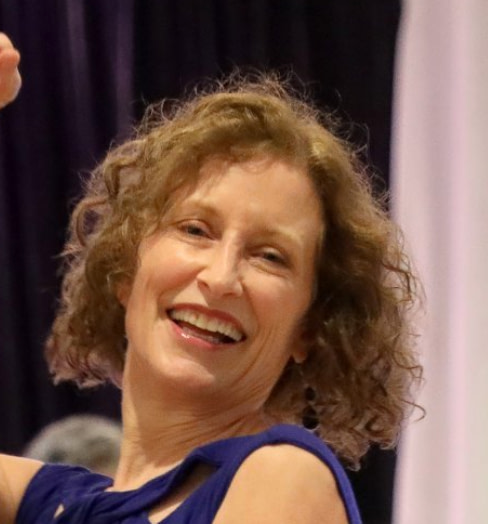
Best teaching method I've ever experienced
Best teaching method I've ever experienced (and I've completed 22 years of formal schooling!) It's like having the reference book on everything WCS PLUS the physical drills, feedback and supportive learning community!
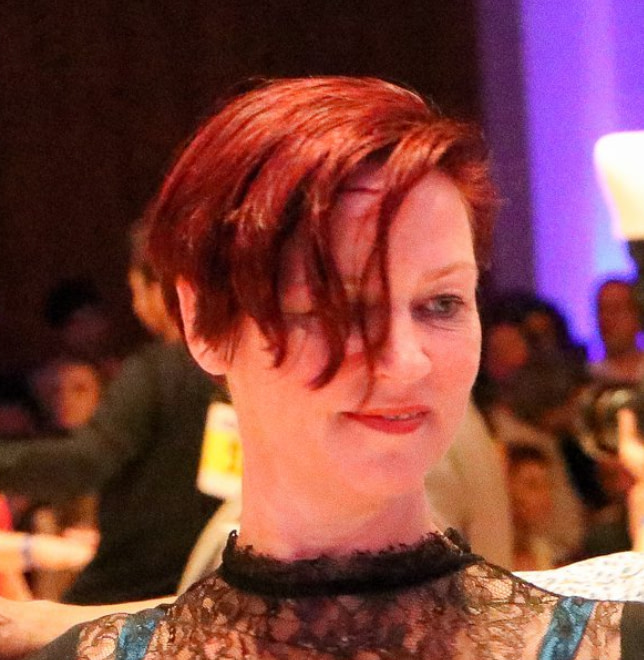
First time trying Swing Literacy with a newcomers workshop
First of all it was a lot of fun for me teaching the class with a different approach than how I learned to dance WCS myself a few years ago. There was more interaction with the students than I’ve seen at other beginner classes.
(The recommended drills and sequence)... were not only a lot of fun but also worked great... in no time it looked like they were dancing West Coast Swing even though it was a simpler version. Everyone was on time, followers waited to be led, and they found it easier to pick up new patterns. Nobody looked at their feet, not once! I danced with the followers and really loved their connection, it really felt like a WCS connection already.
The group was small, but definitely not everybody extremely talented, and still everybody seemed to be able to dance WCS passes that look and feel like WCS within an hour. Definitely will use more of this concept for my next beginner workshop :-) - Miranda Lam

Transformed my community
I loved it. I thought the way it was presented and how it flowed was good for how I learn. I think it took me longer to complete because I would read articles and then mull over them and try to think how that worked or changed the way I would teach. It was very rewarding to me and my students did notice the change overnight. It’s helped me learn to engage my students more and organize my thoughts with a more natural progression for the dance. I get so tired of lecture type teaching with zero questions. I want my students to think more for themselves and know earlier about the hows and whys.

Swing Clubs investing in their teachers
Two WCS dance groups in the Atlanta area have had their instructors (and some of the practice assistants) take the Swing Literacy Teacher Training. I know for certain that one of the clubs paid for their teachers to take the training. As a result of this, there is a notable difference between the teaching styles and methods of the teachers who have taken the training and teachers (primarily teaching for other groups) who have not (and notable difference in the improvement of their students).
In addition, the training has changed the approach to beginner lessons, and progression through the beginner series. Both the students and the teachers have benefitted from this Swing Literacy Teacher Training. And, the teachers are able to use the training when they teach private lessons, so it is another benefit to them. -Linda DeGutis
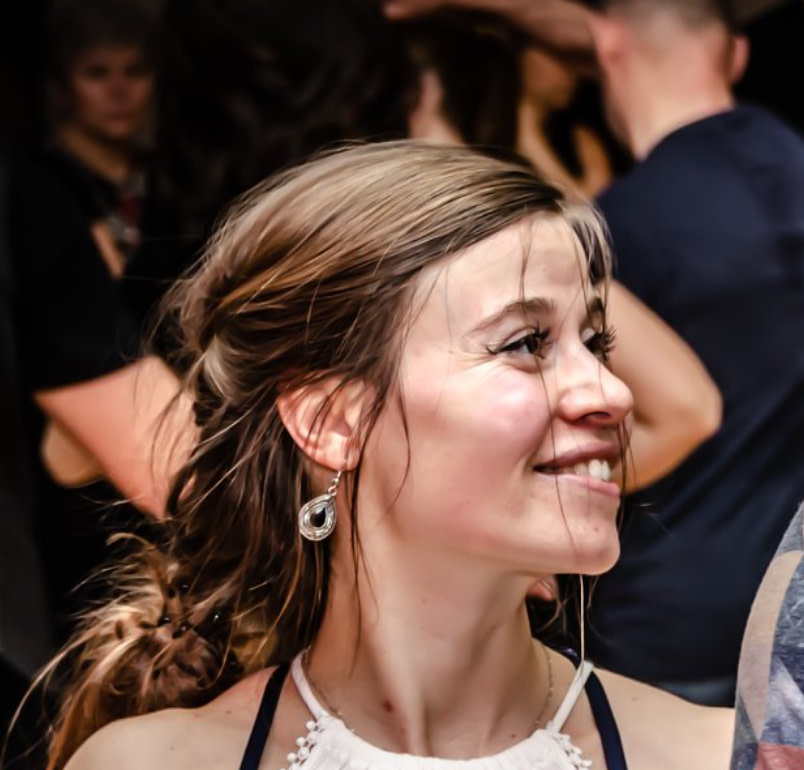
Faster progress with students even without contact
Yesterday I taught a private for the first time since COVID started. I've been teaching this couple more or less consistently since they started 18 months ago.
The couple and I were wearing masks and were in a huge room with open windows, at least 10m apart on different sides of the room. So obviously I couldn't dance with/touch them in order to demonstrate anything. I taught them Swing Literacy fundamentals and discovered they could handle more than I thought. And: it made a big difference! They were able to understand the techniques behind the moves so much better, and I was able to explain the technique way clearer. I think before I much more had to rely on being able to dance with them and make them feel certain movements in addition to explaining some concepts. It was also easier for me to identify what was missing in their dancing, so issues were easier to fix. Their underarm turns, sugar pushes and inside turns looked so much better afterwards!! Thank you, Myles and Tessa, for putting together this invaluable training program!

Understanding the how and the why
“On a personal level, Tessa and Myles have both personally helped me move beyond my limits. They are encouraging as teachers, their collective knowledge of movement and dance, and sheer experience shines through in their interaction. Their private lessons are effective, but be prepared to work: their analysis and attention to details leave no stone unturned. They move beyond the monkey-see-monkey-do by presenting the concepts behind the ideas, reinforcing the foundations beneath the help you want. Be prepared to walk away from these guys a better dancer!”
Frequently Asked Questions
Dancer Development Program
The Swing Literacy program is unique in both delivery and content.
In terms of delivery, it is the only online dancer training available in West Coast Swing. Unlike a live intensive teacher’s workshop, the DDP consists of a mutli-media study component, and the Bootcamp provides a powerful feedback system and group learning environment.
In terms of content, while other methodologies teach you how to dance, or suggest a syllabus of patterns and concepts to learn, Swing Literacy teaches you how to learn and improve your dancing more efficiently. It focuses on the skill development and appropriate pedagogy that is missing from most dance instruction and teacher trainings: the invaluable tools that lead to faster and more permanent learning!
No: The program is not just a bunch of instructional videos. The DDP takes advantage of the power of an online course. It includes mostly written material, supported by videos, images, article links, interactive quizzes, and practical assignments to create a more thorough and balanced learning experience than simply reading a manual.
It depends on how focused and motivated you are. The DDP Core Modules take about 40 hours. There are 6 modules with multiple lessons in each. Each lesson might take 5-30 minutes to work through, some with a short quiz at the end. There is a reflection assignment at the end of each module that might take 5-10 minutes each.
The price is actually a steal compared to other equivalent coach training courses or online technical training courses. It is a completely different product from any dance workshop you have ever taken, and really can’t be compared to the prices you may be used to seeing offered for dance intensives. It would be more appropriate to compare it to a university or business course. This is also a professional designation that will dramatically improve your teaching business, meaning that by taking this course, you will make more money. Prices are listed on each program’s page. Group discounts and monthly payment instalment plans are available.
Here are a few options to consider brainstorming with your club/studio/association:
- Get a group of students together to fund your teacher’s tuition
- Inquire about using your studio/club’s training & development budget
- Consider partially sponsoring a teacher or group of teachers
- Consider a training loan: your association pays the tuition up front and the teacher repays the loan by teaching classes for the association
- Ask us about special rates for groups of teachers from the same organization
- By registering for our Referral Rewards program, you can earn credit towards tuition through sales of our Deck of Drills product. For each Deck of Drills sold, you earn $20 credit, which you can use to pay for Swing Literacy programs when you are ready.
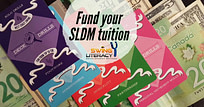
Yes. You can list each certification on your resume, or post it online to announce your training.
Teacher Track
The Swing Literacy Teacher Development Program (TDP) is unique in both delivery and content.
In terms of delivery, it is the only online teacher training available in West Coast Swing. Created and coached by current Champions and master teachers with over 50 years experience in coaching and teaching. Unlike a live intensive teacher’s workshop, the TDP consists of a multi-media study component (DDP Teacher Track) and a practicum component (Teaching Impact Practicum)
In terms of content, while other methodologies teach you how to dance, or suggest a syllabus of patterns and concepts that should taught, Swing Literacy teaches you how to learn and teach more efficiently and effectively. It focuses on the skill development and appropriate pedagogy that is missing from most dance instruction and teacher trainings: the invaluable tools that lead to faster and more permanent learning!
The DDP Teacher Track is incredibly relevant to experienced teachers. Consider it like Professional Development. Regardless of your past education, it is a unique method that requires training to understand and put into practice. Your years of experience might make you quicker at learning it, and doesn’t exclude you from getting an immense value from the training, because the content but is not redundant.
Yes! The TDP provides the foundation upon which you can add any other training of your choice. Consider the TDP to be the main computer program and other teacher trainings are the auxiliary “plug-ins” you can get to enhance it. Any teacher training seminar you take after the TDP will be built upon your Swing Literacy foundation, which augments what you already teach, so your preferred style or content can have a more intentional and effective impact on your students!
Absolutely, in fact, this is the strongest possible way to start your teaching career. Here's why:
The majority of "teacher trainings" offered are focused more on the operations of running a group class: how to get students to partner up, how to count them in, how to teach the steps, how to cue them to rotate, etc.
But we focus on the actual pedagogy of the skills themselves.
So by doing this DDP Teacher Track now, you are developing your ability to teach the skills separately from these superficial operational tasks, kinda like if you were baking a pie and you made the pie shell separately from the filling. So by the time you are actually ready to start teaching, your pie filling will be ready, so you're not teaching with an empty shell! :)
Each Module has an offline assignment to complete and submit for grading, that might take 2 hours to complete.
In the DDP Teacher Track, all of your coursework is online, inside this website. You will be able to progress at your own pace, and return to re-read material.
In the DDP core modules, each lesson requires you to answer a few multiple choice questions in order to access the next lesson. There is a checkpoint questionnaire to help you reflect and process your learning at the end of each module.
For teachers, at the end of each module, there is an additional assignment on teaching that requires longer answers (no essays!) that needs to be submitted for grading by us. There is no final exam.
The Teachers’ Lab is a set of dedicated live Zoom calls that are offered to teachers during our online DDP Bootcamps. Teachers can access it by registering for the DDP Bootcamp Teachers’ Track.
The Teachers’ Lab adds an hour per week of live group teaching coaching via Zoom on the topics within the DDP, from the teacher perspective, and assistance with the teachers' assignments.
Yes, but each person takes their course independently, like a university course. Contact us to discuss options for groups of 3 or more teachers training together.
You get a certificate of training to show that you completed the DDP Teacher Track phase of the Swing Literacy Teacher Development Program. Next you would progress to phase 2 which is the Swing Literacy Teaching Impact Practicum. This consists of a series of courses aimed specifically at teaching topics, such as planning, pedagogy, and promotion, and includes practical projects to guide you as you apply Swing Literacy in your teaching practice. We will be offering this shortly after the DDP Bootcamp Teacher Track.
The next step: Teaching Impact Practicum
The DDP Teacher Track is phase 1 of your Swing Literacy Teacher Development Program.
You will learn an immense quantity and depth of information in the DDP core modules and Teacher Track, which focuses on the skills your students need to build their WCS foundation.
The Teaching Impact Practicum is the essential followup. It consists of a series of courses aimed specifically at hot topics in teaching WCS, such as planning, pedagogy, and promotion, and includes practical projects to guide you as you apply Swing Literacy in your teaching practice. But you don’t have to do it alone – you have professional coaches by your side to give you feedback and guidance. This will not only ensure you are applying and integrating the Swing Literacy accurately and appropriately, but will make your teaching more confident and complete, and help your community grow.
In the Teaching Impact Practicum, there is a menu of several Projects to choose from that involve you taking action in your teaching, but don’t require us to meet in person. They can be completed in any order and at your own pace. All involve an open dialogue of direct feedback from us.
The Teaching Impact Practicum is intended as the followup course to the DDP Teacher Track. All teachers at all stages of their career will find immense value from complete their certification.
© 2019, SwingLiteracy.com I Disclaimer I Privacy policy